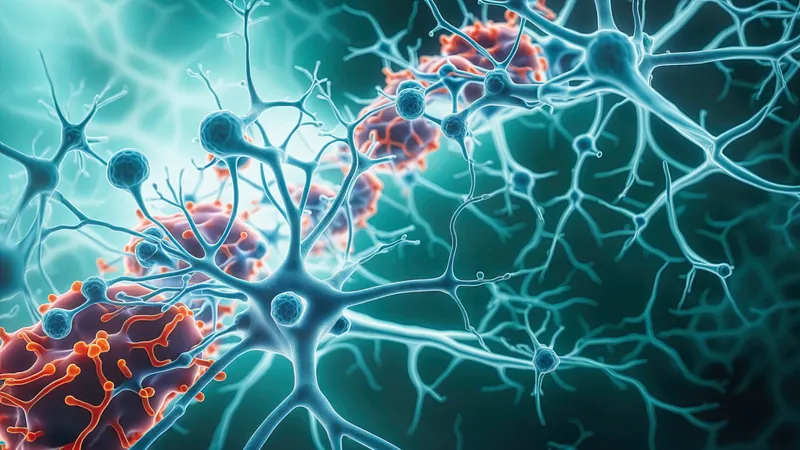
Breakthrough in Anxiety Treatment: New Drug Target Discovered!
2025-01-29
Author: Wei
Breakthrough in Anxiety Treatment: New Drug Target Discovered!
In a groundbreaking study by investigators at Weill Cornell Medicine, researchers have successfully identified a specific brain circuit that, when inhibited, reduces anxiety without harmful side effects. This discovery could herald a new era in the treatment of anxiety disorders, indicating a promising target for future therapies.
The study, which was published in Neuron on January 28, reveals that experimental drug compounds activating a brain-cell receptor known as the metabotropic glutamate receptor 2 (mGluR2) play a pivotal role in this process. This receptor is present in various brain circuits; however, the research demonstrated that stimulating it within a targeted circuit linked to emotion regulation—involving the amygdala—can alleviate anxiety symptoms effectively.
Dr. Joshua Levitz, senior author of the study and associate professor of biochemistry, highlighted that their findings open up exciting new avenues for anxiety treatment. Current therapies often lead to undesirable side effects, such as cognitive impairments, making this research particularly relevant in the quest for safer options.
The study's co-first authors include Drs. Hermany Munguba and Ipsit Srivastava, along with Dr. Vanessa Gutzeit, who was a doctoral student in the Levitz lab during the research. They made strides in the understanding of how mGluR2 works within the brain, utilizing a technique called photopharmacology—a method developed by Dr. Levitz in the early 2010s. This cutting-edge technique allows researchers to activate specific receptors using light, providing unprecedented control over drug effects in targeted brain circuits.
During their investigation, the researchers pinpointed the basolateral amygdala (BLA) as a key region where mGluR2 activation exhibited its anxiety-reducing properties. Further dissection revealed two distinct circuits leading to the BLA: one linked to the ventromedial prefrontal cortex and another to the insula, a region responsible for integrating sensory and internal body signals.
While activating mGluR2 in the first circuit reduced a classic anxiety symptom—spatial avoidance—it also resulted in memory impairment, mirroring effects seen with conventional anxiety medications. However, activating mGluR2 in the second circuit improved sociability and feeding behavior without noticeable cognitive side effects. This suggests the insula-BLA circuit may emerge as a safer target for future anxiety treatments, an idea that Dr. Levitz and his team are eager to explore further.
In pursuit of this goal, researchers aim to selectively target the insula-BLA circuit without relying solely on mGluR2 due to its widespread presence throughout the brain. The team is optimistic that their innovative circuit-mapping toolkit will also facilitate the examination of other drug classes, including opioids and antidepressants, paving the way for safer and more effective mental health treatments.
As the understanding of anxiety disorders and their treatments evolves, this exciting research holds the promise of revolutionizing how these conditions are managed, making it a hopeful beacon for those who struggle with anxiety-related issues. Stay tuned for further developments in this crucial field of study!


 Brasil (PT)
Brasil (PT)
 Canada (EN)
Canada (EN)
 Chile (ES)
Chile (ES)
 Česko (CS)
Česko (CS)
 대한민국 (KO)
대한민국 (KO)
 España (ES)
España (ES)
 France (FR)
France (FR)
 Hong Kong (EN)
Hong Kong (EN)
 Italia (IT)
Italia (IT)
 日本 (JA)
日本 (JA)
 Magyarország (HU)
Magyarország (HU)
 Norge (NO)
Norge (NO)
 Polska (PL)
Polska (PL)
 Schweiz (DE)
Schweiz (DE)
 Singapore (EN)
Singapore (EN)
 Sverige (SV)
Sverige (SV)
 Suomi (FI)
Suomi (FI)
 Türkiye (TR)
Türkiye (TR)